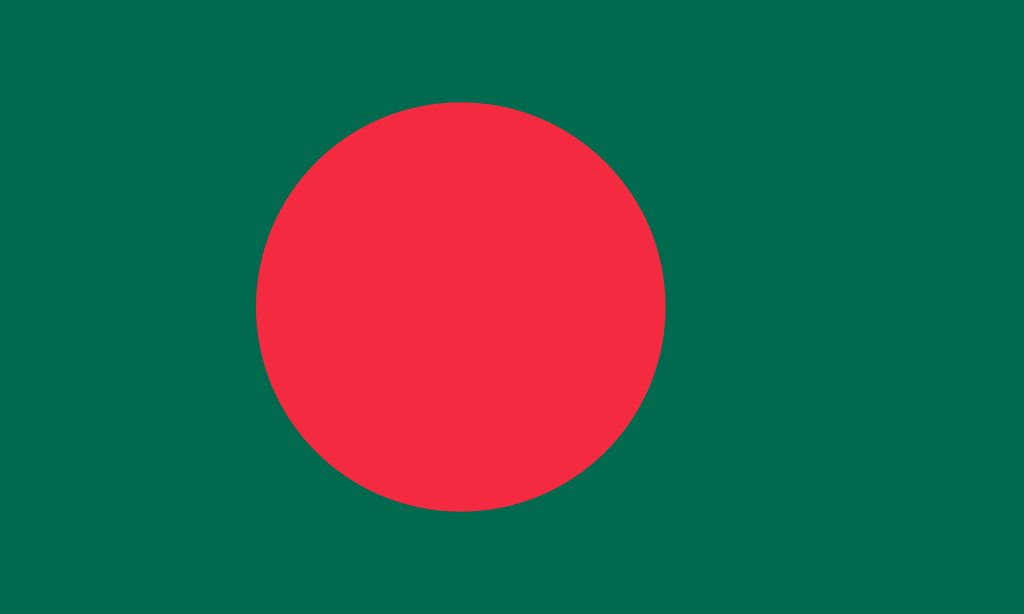Humanitarian situation report for children in Bangladesh
Capital: Dhaka
Area: 130,170 square kilometers
Population: 166,988,322
Form of government: Parliamentary republic
The People's Republic of Bangladesh is a country located in South Asia. In addition to having fertile lands, it is also a country severely affected by global climate change. Bangladesh, which is prone to disasters such as floods, struggles to meet its food and clean water needs. The official language of the country is Bengali. 89% of the population is Muslim, with the rest being Hindus and Buddhists.
According to 2020 data, 26.8% of the population are children aged 0-14. Life expectancy is about 70-73 years. According to 2020 USAID data, the average woman in Bangladesh gives birth to two children in her lifetime. While the maternal mortality rate is 173 per 100,000 live births, 31 per 1,000 children under the age of five and 25 per 1,000 newborns die.
The most common disease in the country is pneumonia. According to UNICEF research, 13% of under-five deaths are due to this cause. If these conditions persist, the number of children dying from pneumonia alone will reach hundreds of thousands in the next 15 years; diseases such as diarrhea and sepsis are expected to increase this rate as well. Even today, more than 170,000 children under the age of five die every year in Bangladesh due to malnutrition, disease and poverty. This is equivalent to one child dying from treatable causes every three minutes.
Education in Bangladesh is free and the literacy rate among young people is 92%. In addition, children aged 9 to 10 are obliged to attend school. The primary school completion rate has increased from 31.6% to 98.5% in the past 38 years. There are local children, disabled children and working children who do not have access to education opportunities. The number of children who drop out of school and work to support their families is very high. The dropout rate is 5.1%. According to UNICEF data, a quarter of the 1,700,000 children engaged in child labor are between the ages of 6 and 11. These children work in dangerous conditions and for very long hours for very low wages. It is noted that this number rises to 7.4000,000 between the ages of 5-17. Although most of them are boys, girls also work in domestic work. This is why early marriage has become very common. Apart from this, girls are also subjected to physical abuse. However, the state does not impose any legal penalty for this.
Orphans and street children are often imprisoned or abused for committing minor crimes. Most orphanages are overcrowded and do not have the capacity to accommodate these children. It is known that approximately 5,000,000 orphans live in Bangladesh. Orphanages in the country are run either by individual contributions or by funds collected from zakat.
Under the Orphanage and Widows Act, there are state-run children's homes called Sarkari Shishu Sadan, which have been established to rehabilitate and reintegrate orphans. These orphanages cater to the shelter and education needs of children until they reach the age of 18. There are approximately 85 orphanages in the country; 10,300 orphans live here. In addition, the Ministry and the Department of Social Welfare have established small groups for orphans. Each group stays in a family environment 24 hours a day and is rehabilitated in the safe environment of a foster family. There are also orphanages sponsored by missionary institutions in the country.
Sources:
ACADEMIA. “Challenges of Islamic Da’wah in Bangladesh: The Christian Missions and Their Evangelization”.https://www.academia.edu/2984714/Challenges_of_Islamic_Dawah_in_Bangladesh_The_Christian_Missions_and_Their_Evangelization. (09.11.2021).
BANGLAPEDIA. “Orphanage”. https://en.banglapedia.org/index.php/Orphanage. (17.11.2021).
Knoema. “Bangladesh”. https://knoema.com/atlas/Bangladesh/topics/Education. (17.11.2021).
UNICEF. “Children in Bangladesh”. https://www.unicef.org/bangladesh/en/children-bangladesh. (09.11.2021).
USAID. “Saving Lives and Improving Health Outcomes in Bangladesh through Increased Access to Contraceptives”. https://www.usaid.gov/global-health/health-areas/family-planning/resources/impact-brief-bangladesh. (09.11.2021).
Worldometer. “Bangladesh Population”. https://www.worldometers.info/world-population/bangladesh-population/. (17.11.2021).
